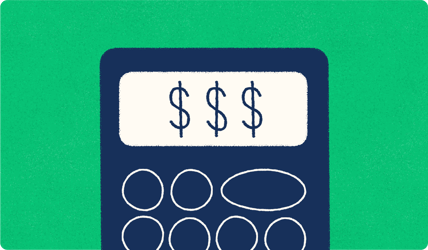
The patient experience influences processes, clinical outcomes, and hospitals’ reputations, making it one of the most critical metrics healthcare providers can focus on. Often, poor communication is the downfall of the patient experience. This is where text messaging in healthcare steps in as a game-changer. A mass texting platform can be an invaluable tool for healthcare providers looking to efficiently and effectively improve patient satisfaction.
How Mass Texting Improves the Patient Experience
SMS messaging can enhance the patient experience in two ways. First, it allows you to send essential information, reminders, and alerts directly to patients and their caregivers. Second, it streamlines staff communication, ensuring adequate staffing and information distribution.
If you’re worried that your patients might find texting unprofessional; don’t be. A 2023 study on texting patient family members found that 71% of loved ones “strongly agree” that texting is a helpful healthcare tool. Plus, SMS communications empowered caretakers to become more involved and informed in their loved one’s care.
Older studies also reaffirm that patient texting is welcome and well-received. For example, this 2016 study found that the majority of respondents wanted to receive text messages to be notified of upcoming appointments, expiring insurance, and medication.
Is Mass Texting HIPAA Compliant?
Mass texting can be HIPAA compliant if certain safeguards are in place. You can ensure your mass texting platform is compliant by asking if they encrypt their messages and will sign agreements to handle PHI (Protected Health Information) responsibly. In addition, you must adhere to the following guidelines.
- Only give access to authorized personnel
- Keep detailed records of all messages sent and received
- Ensure recipients give informed consent
- Implement regular staff training, clear policies, and risk assessments
We do not do messaging encryption at rest, and because SMS messages cannot be encrypted, we are not HIPAA compliant. We trust our users to be responsible with our service and not include protected health information in the contact record(s) that are uploaded.
However, we are a secure text messaging service that doesn't sell your information, and we are willing to sign a Business Associate Agreement to provide additional comfort for your team.
7 Use Cases for Text Messaging in Healthcare
Hospitals can employ a mass texting service in several ways to stay in touch with patients and caregivers, improving the overall patient experience in healthcare.
1. Appointments
Sending out appointment reminders is a smart way to ensure patients show up on time, reducing no-shows, delays, and excessive rescheduling. In fact, healthcare providers that use SMS can reduce missed appointments by 80%.
2. Medication and Aftercare Reminders
Follow-up care is integral to any hospital's patient experience. This element is particularly important for long-term patients who appreciate reminders to do physical therapy exercises, change bandages, or take medications.
3. Emergency and Urgent Information
In emergencies or unexpected situations, text messaging is a quick way to get in touch with patients. Even if you use mass texting for nothing else, it’s easy to see the advantage of having an emergency alert system that allows you to reach patients and staff with instant updates or instructions.
4. Feedback from Patients
SMS messaging can be used to collect patient feedback, which can then be used to improve patient hospital care. Text message surveys may be more effective than traditional methods of gaining feedback as they give patients the option to answer a quick question via text and provide immediate hospital feedback.
5. Bill Reminders and Payment
In today's fast-paced world, it's easy for patients to forget about upcoming bills or miss due dates. By sending timely alerts directly to patients' mobile devices, healthcare providers can significantly reduce the number of missed or late payments, improving their revenue cycle management in the process.
6. Answer Questions and Increase Patient Engagement
Healthcare providers can proactively ask patients if they have questions before they arrive at their appointment. This pre-appointment interaction helps alleviate patient anxiety and ensures they are well-prepared for their visit. Text messaging also provides an accessible platform for post-appointment engagement–a useful tool since patients often think of additional questions or realize they've forgotten to ask something during their visit.
7. Open-shift Alerts
When it comes to healthcare, having adequate staff coverage is crucial. Reach staff to cover shifts by alerting staff of openings through mass text messaging or automated calling. Instead of spending valuable time manually calling each staff member, managers can send out a single mass text or automated call. This way, the information reaches everyone simultaneously, and the first available employee can claim the shift.
4 Best Practices for Texting Patients
As healthcare providers increasingly turn to text messaging as a tool for patient communication, it's crucial to understand the best practices to ensure effective and respectful interactions. In the following section, we will outline the four best strategies for texting patients.
These guidelines aim to enhance patient engagement, maintain privacy and confidentiality, and ultimately improve the overall quality of care.
1. Be Mindful of How Many Messages You Send
It's important not to send too many messages to patients as frequent messages can be annoying and intrusive. Only send messages when necessary and make sure they contain meaningful information your patients want to receive.
2. Keep Your Messages Clear and Concise
Keep your messages short by cutting out unnecessary information and writing clearly. The patient should be able to understand what they need to know from the message in just a few seconds.
3. Ask for Confirmation
Ask your patients to confirm their appointments to reduce no-shows, eliminate frustration, and keep your schedule clean. With Text-Em-All, you can send out a quick survey, and we’ll break down the answers into a simple graph you can use to gauge how often patients are canceling their appointments.
4. Personalize Your Messages
Personalizing your text messages offers a more human approach to communication. You can personalize your texts with information such as:
- The patient’s name
- The doctor’s name
- Appointment time
- Appointment location
How Text-Em-All Improves Patient Satisfaction
Text-Em-All can help to improve the patient experience and patient satisfaction in hospitals, and our goal is to help you make missed appointments, shifts, and forgotten medications a thing of the past. Our easy-to-use platform gives you the tools to send important text messages and calls quickly to patients and staff, no matter how many people you need to contact.
Give us a try today by creating your free account and see how we can help you take your patient satisfaction to new heights!













.png?width=808&height=263&name=cta-healthcare-guide%20(2).png)